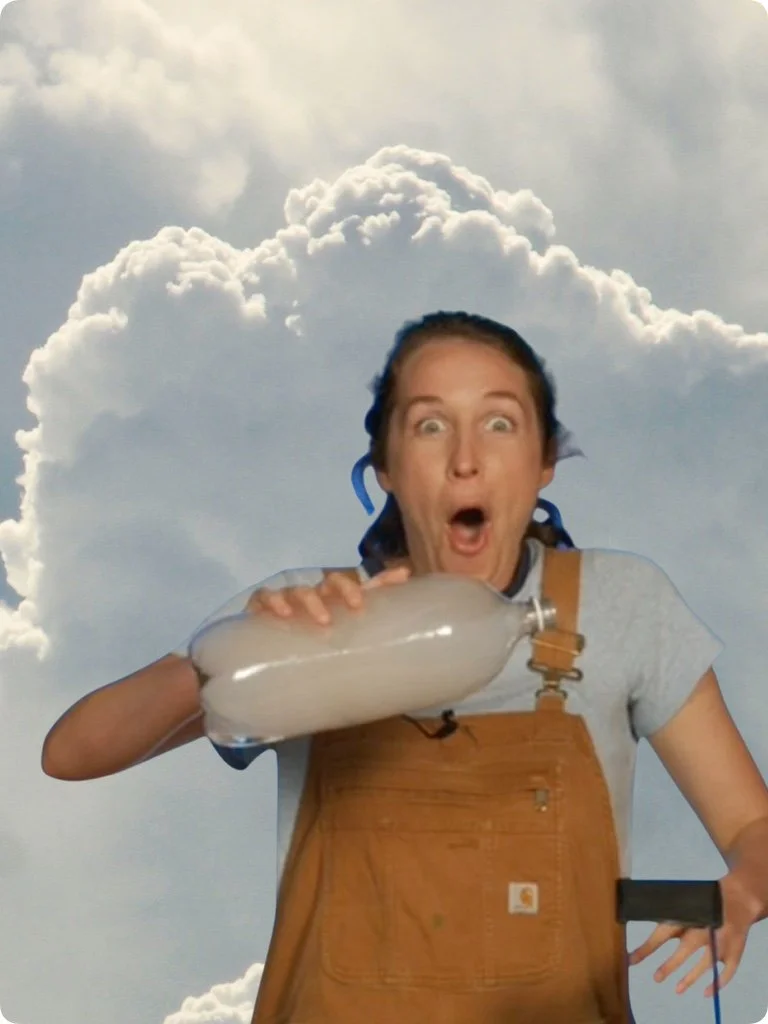Ask Tappity: Science Questions for Kids > What Are Clouds?
What Are Clouds?
You probably know that rain comes from clouds, but what exactly are clouds? If they’re made of water, then how they float so high? Watch this video to find out, or read our explanation below!
Clouds Are Liquid Water
In short, clouds are tiny droplets of water, so small that they float in the air. Here’s how they form: when water gets hot enough, (like when you boil it), it turns from a liquid into a gas. That gas, called water vapor, is invisible, and lighter than air, so it floats up just like a balloon. The higher you go, the colder it gets, so once that water vapor gets high enough, it's ready to turn back into liquid water.
Raindrops Have Tiny Specks Of Dust At Their Center
But here’s the thing - in order to do turn into liquid, or condense, the water vapor needs something to stick to. Until it has a surface, it just stays in gaseous form, really cold and ready to turn to liquid, but with nothing to form around. So when a tiny dust particle floats through cold water vapor in the sky, the cold water vapor condenses around it, forming a liquid water raindrop coating a dust particle.
What About Rain?
These raindrops are still super tiny - barely larger than an invisible speck of dust. And like tiny specks of dust, they’re not heavy enough to fall. They just drift along in the air, carried around by gusts of wind. As time passes, though, the raindrops collect more and more water, eventually becoming heavy enough to fall to the ground as rain.
Cloud Facts for Kids
Got cloud questions? We’ve got cloud answers!
-
An essay written in 1803 about clouds divided them into 4 core groups:
1. Cirro-form: are high, wispy curls
2. Cumulo-form: look like fluffy white cotton balls. Very cloud-looking clouds
3. Strato-form: broad and wide, like a blanket covering the sky
4. Nimbo-form: rain clouds
-
Sure! If you could fly in a hot air balloon, you could touch and feel a cloud. It would be just like going through fog, since fog is just a cloud touching the ground.
-
Yes, it can! When it rains while the sun is shining, it's called a sunshower. This can happen when it's raining elsewhere, but the wind blows the rain to fall where there aren’t any clouds in the sky.
-
A rain cloud is one in which the droplets have gotten big enough to be heavy enough to fall to the ground. So you can think of a rain cloud as one in which each individual water droplet is really big. These bigger droplets make for a thicker, denser cloud, which allows less light to pass through the bottom of the cloud, resulting in a darker cloud, especially at the bottom. It’s as if you shined a flashlight through a stretched out tissue paper, and then a bunched-up tissue paper.
-
Hail is frozen balls of ice that fall to the ground during thunderstorms. Unlike snow, hail is more likely to fall in warmer temperatures, paradoxically. When a thunderstorm has strong wind blowing upwards (called an updraft), it can blow raindrops high into the sky, where they freeze into balls of ice. These balls of ice grow as more rain comes into contact with them until they are heavy enough to fall through the updraft.
-
Snow forms the same way rain does, but forms when the temperature is below freezing. Then, instead of turning into liquid water, the water vapor turns into solid ice when it comes into contact with a dust particle (turning from gas straight into solid is called deposition).
More Answers to Weather Questions from Kids
What is a hurricane? What are rainbows made of? The Tappity Meteorology Library has interactive lessons with answers to those questions and more!
Want Even More Science for Kids?
Dive into Tappity, the world’s largest interactive K-5 science library. Find everything from penguins to planets and even protozoa! So whether you’re an early engineer, a budding biologist, or an aspiring astronaut, you'll be sure to discover something new just for you.




















